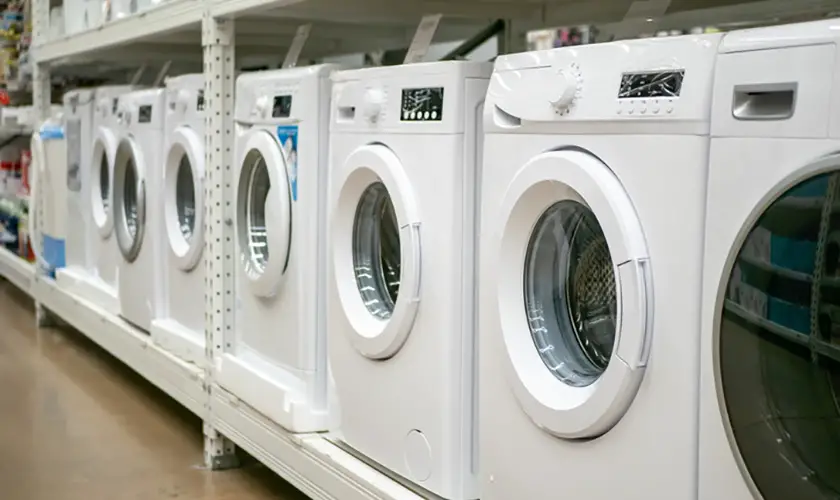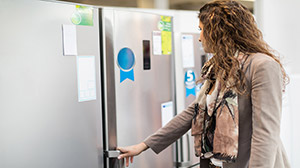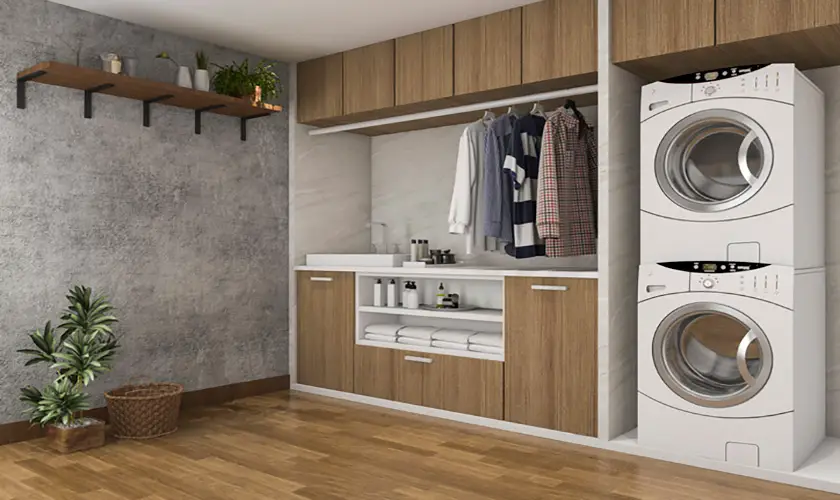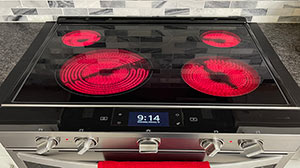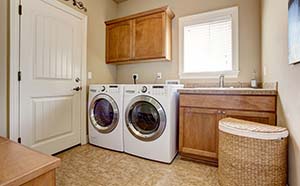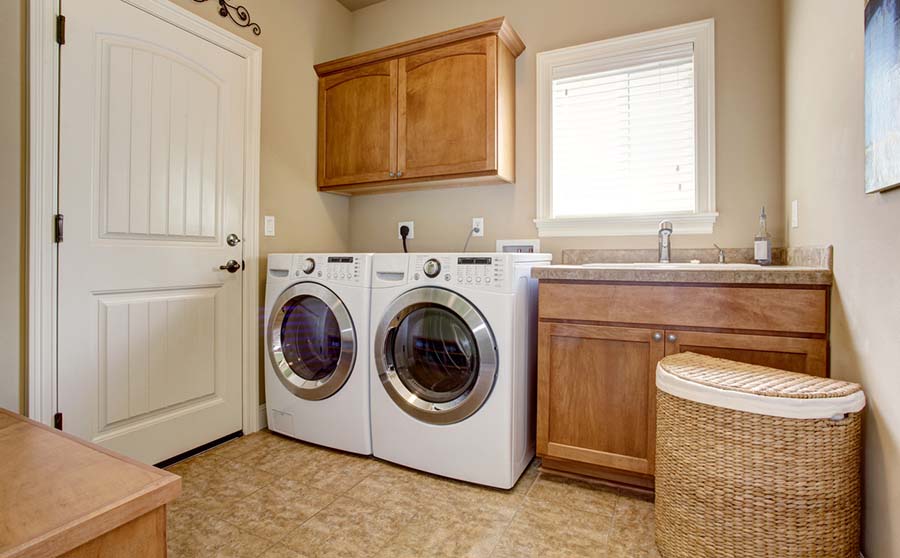
If you need to keep your energy bills low during winter, you should check your laundry energy use, mainly if you use a clothes dryer. Heat pump dryers are energy efficient and one of the best options for most people.
Installing a heat pump dryer is very simple and can be installed almost anywhere in your home, even in a garage. However, a heat pump dryer can’t be wall-mounted or installed upside down. Heat pump dryers are ventless and have a condensation tray that needs emptying every 2 to 3 uses. They also have a filter and coil that need routine cleaning for optimal performance.
This article will give guidelines on installing heat pump dryers, how they work, and whether you can install them on a wall or upside down. See below some of the main guidelines every user should know before installing a heat pump dryer:
How Does a Heat Pump Dryer Work?
A heat pump dryer works by using a refrigerant to catch the hot air from the dryer, and the atmosphere is then pushed into a compressor to make it more desirable. It circulates the new hot air back, and the process continues.
Simply put, the heat pump removes moisture by heating the air in the drum, which is then filtered and partially cooled. It works much like a condenser where the water is collected in an internal tank as it condenses, so one does not necessarily need an external vent or hose outside.
Additionally, a heat pump dryer may differ from a condenser dryer in that the pump dryer reuses the remaining heat left in the drum. Hence, it recycles the hot air as much as possible while drying things. This process makes the machine very efficient.
Heat pumps incorporate various components and several sophisticated technologies to make them energy efficient. The refrigerant used in heat pump dryers is tetrafluoro-ethane or R134A.
Though the refrigerant is non-flammable and non-ozone-depleting, you must be very careful when working with it, fixing or recycling a heat pump dryer. This will make sure the machine stays for a long time.
Optional Water Drainage System
Heat pump dryers collect water in a condensed water container that you must empty every few loads. However, if you don’t want to go through the hassle of emptying the container frequently, you have the option on most units to install a drainage system outside the house or into a sink.
Is a Heat Pump Tumble Dryer Worth the Money?
Yes, it is worth the cost. Though heat pump tumble dryers are very costly, they are some of the best in the market and the most energy-saving heat dryers. Heat pump tumble dryers are cost-effective in that they are energy efficient and less abrasive to your clothes.
Heat pump dryers can be 40% to 50% more efficient than traditional vented dryers. However, they have a smaller capacity and take slightly longer to dry.
The fact that heat pump dryers use almost half the energy compared to other dryers saves a lot of energy and a lot in the long run. The unit makes drying clothes more effective and convenient. This is because, while using this dryer, you can dry as many clothes as you need and more frequently without worrying about incurring any additional costs.
If you have a large family or you’re in a home that lacks suitable drying space, then using a heat pump tumble dryer can be a better option economic wise. Lastly, since the tumble dryers operate under very low temperatures, they are less abrasive to your laundry.
They are high-end machines; hence they usually use moisture sensors to give your clothes a more consistent dryness and treat laundry with care, so the machines are gentler with your clothes or fabrics.
Stacking a Heat Pump Dryer On Top of a Washing Machine
Using a stacking kit, you can stack a heat pump dryer onto a front loader washer. Use bidding plates if the washing machine and the dryer do not match in terms of right-hands. Though they come with the device, you do not have to use them if unnecessary.
Can Heat Pump Dryers be Wall-Mounted?
You can’t install heat pump dryers upside down. Heat pump dryers are too heavy to be wall-mounted.
As a rule of thumb, only the vented dryers can be wall-mounted. The heat pump dryers are too heavy for brackets and need to remain on the floor or stacked using a manufacturer-approved stacking kit.
What About Installing Upside Down
Some people ask about installing their heat pump dryers upside down to make the control panel easier to access. Unfortunately, because these dryers are not suitable for wall-mount, installing upside down is also not an option.
Heat pump dryers have a condensation tray at the top of the dryer that you must empty every 2 to 3 cycles. Installing the dryer upside down would cause the unit to leak because the tray fits one way. Even if you install the optional water drainage system, the control panel orientation can’t be changed, meaning the digital display would be upside down.
Can You Put a Heat Pump Tumble Dryer Anywhere?
You can install a heat pump tumble dryer nearly anywhere inside your home or garage. They are well-suited for small houses with limited venting options or in small apartments, condos, or townhouses. They can even be installed on the second floor or along an interior wall of your house.
These areas have all been difficult to vent the dryer properly. Since heat pump dryers are ventless, venting considerations are no longer a hindrance. You can discharge into a nearby drain, such as a laundry sink or a clothes washer drain, even if using the optional drain tube.
Conclusion
Heat pump dryer installation is very easy. All you have to do is follow the dryer manual or call an expert. Note that some operations are hazardous, and you should be extra careful. Though the heat pump tumble is very costly, it is worth it. The dryer is energy efficient and can protect your fabric since it works under lower temperatures than other dryers.
Sources


